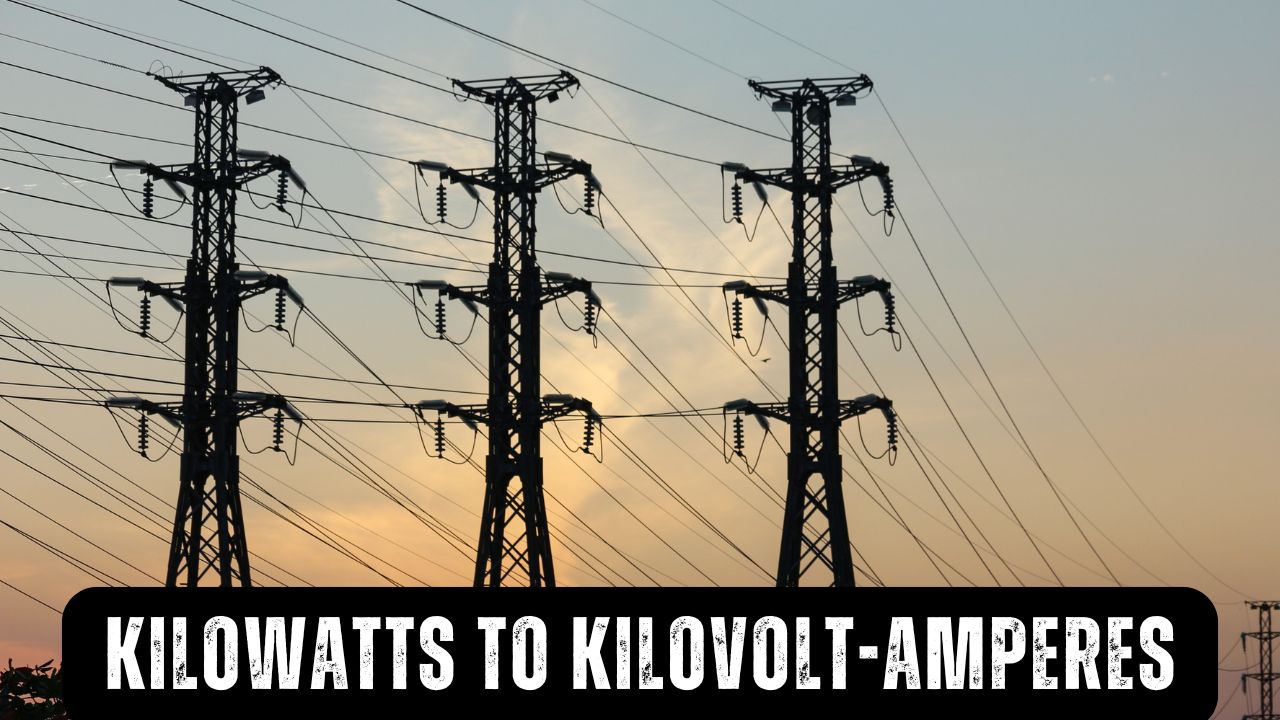Kilowatts to Kilovolt-Amperes Converter

How to Convert Kilowatts (kW) to Kilovolt-Amperes (kVA)
To convert kilowatts (kW) to kilovolt-amperes (kVA), you need the Power Factor (PF) of the electrical system. The formula is:
KW to KVA Calculation Formula
The apparent power S in kilovolt-amperes (kVA) is equal to the real power P in kilowatts (kW), divided by the power factor PF:
S(kVA) = P(kW) / PFThus, kilovolt-amperes are equal to kilowatts divided by the power factor:
kVA = kW / PFExample Calculation
If you have a power measurement of 10 kW and a power factor of 0.8, the calculation would be:
S(kVA) = 10 kW / 0.8 = 12.5 kVAReal Power (kW)
Kilowatts (kW) represent the real or active power that performs actual work in an electrical system. This is the power that’s converted into useful output like mechanical work, heat, or light.
Apparent Power (kVA)
Kilovolt-amperes (kVA) represent the total power supplied by the electrical system, including both real power and reactive power. This is what your electrical system must be capable of handling.
Power Factor (PF)
Power factor is the ratio between real power (kW) and apparent power (kVA). It ranges from 0 to 1, where:
- PF = 1: Ideal efficiency (100%)
- PF < 1: Some power is not converted to useful work
Pro Tip
Always size your electrical systems based on kVA (apparent power) rather than kW (real power) to ensure your system can handle the total power requirement!
For more information on kilowatts and kilovolt-amperes, visit this article on kW and kWh.
Kilowatt to Kilovolt-Amperes Conversion Table
Formula: kVA = kW / Power Factor (PF)
| Kilowatts [kW] | kVA at PF=1.0 | kVA at PF=0.9 | kVA at PF=0.8 | kVA at PF=0.7 |
|---|---|---|---|---|
| 1 kW | 1.000 kVA | 1.111 kVA | 1.250 kVA | 1.429 kVA |
| 2 kW | 2.000 kVA | 2.222 kVA | 2.500 kVA | 2.857 kVA |
| 3 kW | 3.000 kVA | 3.333 kVA | 3.750 kVA | 4.286 kVA |
| 4 kW | 4.000 kVA | 4.444 kVA | 5.000 kVA | 5.714 kVA |
| 5 kW | 5.000 kVA | 5.556 kVA | 6.250 kVA | 7.143 kVA |
| 10 kW | 10.000 kVA | 11.111 kVA | 12.500 kVA | 14.286 kVA |
| 15 kW | 15.000 kVA | 16.667 kVA | 18.750 kVA | 21.429 kVA |
| 20 kW | 20.000 kVA | 22.222 kVA | 25.000 kVA | 28.571 kVA |
| 25 kW | 25.000 kVA | 27.778 kVA | 31.250 kVA | 35.714 kVA |
| 30 kW | 30.000 kVA | 33.333 kVA | 37.500 kVA | 42.857 kVA |
